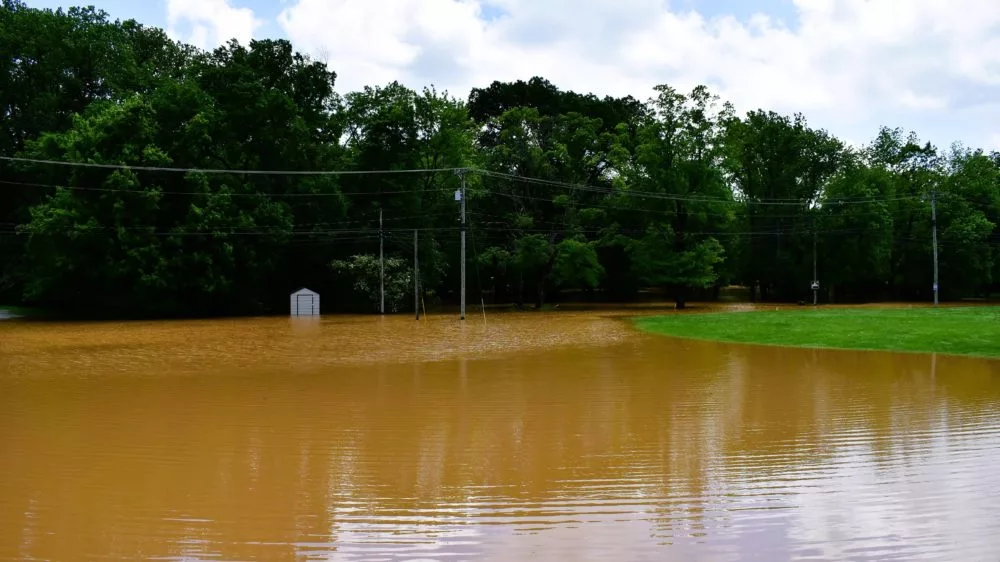
The deer hunting season is finally here.
Officials with the Kentucky Department of Fish & Wildlife Resources announced Friday the beginning of the archery option — slated for Saturday, September 2, through January 15, 2024.
Home to one of the largest white-tail populations in the country, hunters harvested nearly 145,000 last year, providing an abundance of free-range, locally-sourced wild venison for families and friends.
Due to the number of methods and seasons available, hunters must understand a bevy of requirements before taking to the field.
Licenses and Permits can be purchased online through fw.ky.gov, and other authorized agents in Kentucky. Children under 12 do not need a license or permit to hunt deer, but must be accompanied by an adult.
Resident requirements include a youth hunting license and youth deer permit for those aged 12-to-15, annual hunting licenses and statewide deer permits for those aged 16-to-64, and senior/disabled sportsman’s license or the lifetime option for those 65-and-older or handicapped.
Non-resident requirements are the same, and non-residents who own property in the Commonwealth are not exempt.
Other seasons include: crossbow from September 16 through January 15 of next year, muzzleloader from the weekend of October 21 and the week of December 9-17, two weeks of modern guns from November 11-26, a youth-only weekend planned for October 14 and 15, and a free youth weekend organized for December 30 and 31.
Valid proof of hunter education certification is required for hunters born in 1975 or later.
Kentucky’s statewide deer permit allows hunters to take up to four deer, one of which can be antlered.
Harvest limits for antlerless deer and method restrictions vary across Kentucky’s four deer zones, which are designated based on deer population density. For example, a hunter in southeastern Kentucky’s Zone 4 may only take two deer, only one of which may be antlerless. However, a hunter may harvest more deer in another zone. Hunters may harvest more than four deer apiece by purchasing additional deer permits for use in Zone 1, or across zones.
Kentucky officials are also continuing to monitor for the detection of chronic wasting disease in deer and elk. The disease has not been detected in Kentucky. However, special restrictions still remain within the CWD Surveillance Zone in Calloway, Marshall, Graves, Hickman and Fulton counties. Those hunting in these counties must familiarize themselves with the special regulations. As part of the department’s CWD monitoring efforts, there are mandatory check stations for deer harvested in these areas during the first three days of modern gun season.
As for hunting locations: deer tend to prefer edge habitat between crop fields and forests, which provides a preferred mixture of cover and foods.
This dynamic, however, is different in west Kentucky — due to the amount of crops grown there. KFW Deer Biologist Tommy Apostolopoulos notes deer here are less mast driven because food sources from agricultural activity are more readily available.”
New properties open under statewide hunting regulations include Gabbard Branch WMA in Butler County, Ferguson Creek WMA in Livingston County and Hoskins WMA in Leslie and Harlan counties.
It’s worth noting that Kentucky is consistently one of the top states in the country for trophy bucks scored under the Boone and Crockett Club system. Kentucky’s top counties for trophy bucks over the past decade include Breckinridge, Grayson, Ohio, Pulaski and Todd counties.
On poaching:
Suspected illegal activity may be anonymously reported using the KFWLaw smartphone app. Tips can also be submitted by texting the keyword “KFWLaw” along with a message to 847411 (tip 411) or by calling 800-25-ALERT.
On preparing:
Essentials hunters should pack for the field include: proof of hunter education, licenses and permits if required, harvest log and pen, camouflage clothing, hunter orange cap and jacket if gun hunting, field dressing tools such as a sharp knife and surgical gloves, water and snacks
Gun hunters should always check that they have packed their ammunition before leaving the house. Solo hunters should let someone know where they will be hunting and what times. Start your hunt with a fully charged cell phone and the ringer set on silent. Eye and ear protection is also advisable.
On tree stand safety:
Tree stand hunters should always use a safety harness and lifeline (such as a high-tensile rope and Prusik loop) to prevent falls while climbing a tree and while in the stand. A haul rope to pull up the bow, crossbow or unloaded rifle is also essential, keeping hands free while climbing to the stand and reducing the chances of a fall.
Avoid homemade stands, such as those with boards nailed to a tree trunk for steps, as they can quickly deteriorate and often are hazardous.






